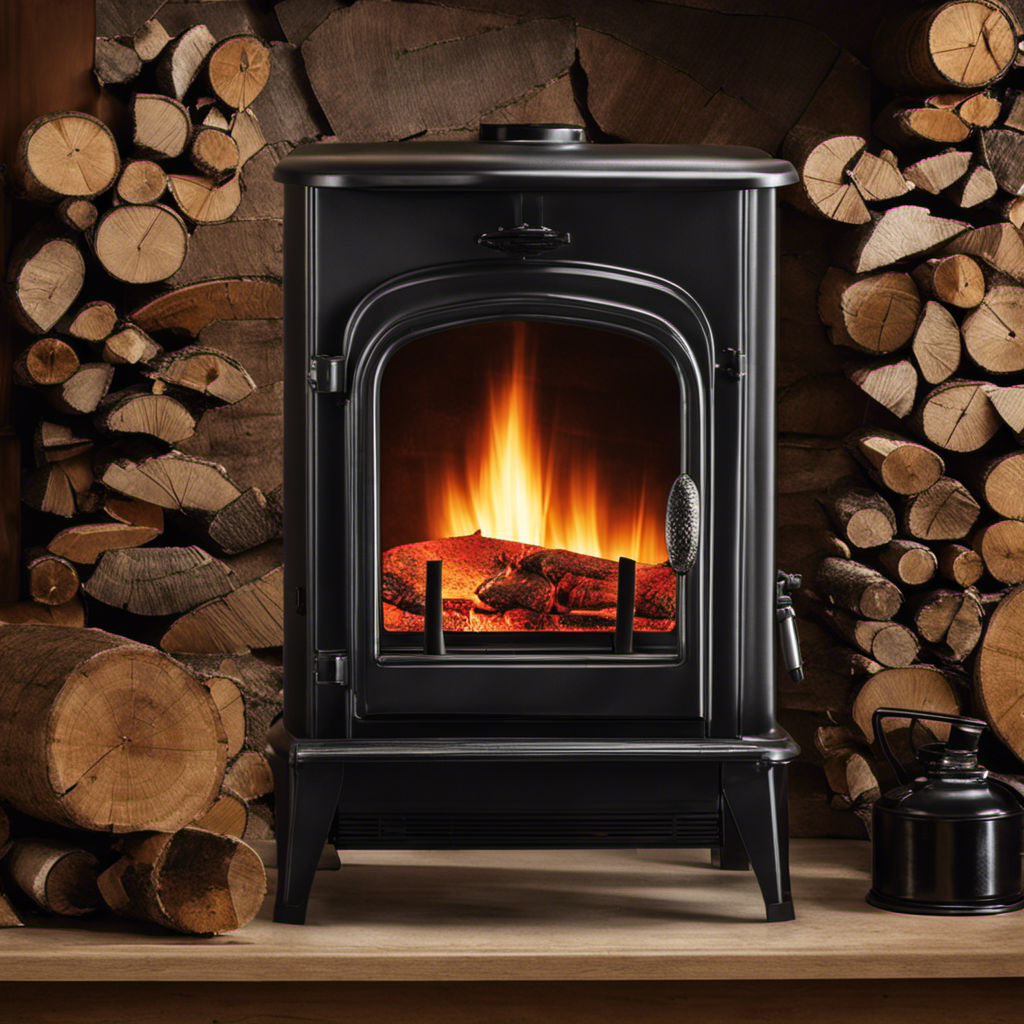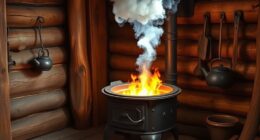Hello! It seems like you are ready to begin the journey of installing a chimney for your wood-burning stove. If so, you have come to the right place.
In this article, I’ll be your guide through the ins and outs of this important system. From understanding its significance to troubleshooting common issues, I’ve got you covered.
So buckle up and get ready to master the art of running a flue like a pro!
Key Takeaways
- Regular maintenance and cleaning of the flue are essential for safety.
- Select proper flue materials that can withstand high temperatures and corrosive byproducts.
- Carefully measure and assess the installation area to determine the appropriate size and length of the flue pipe.
- Clean the flue at least once a year and remove debris and creosote buildup using a chimney brush.
Understanding the Importance of a Properly Functioning Flue
I really need to figure out why my flue isn’t working properly because it’s crucial for the safety of my wood stove.

The importance of chimney sweeps can’t be overstated when it comes to maintaining a properly functioning flue. Chimney sweeps are trained professionals who can inspect and clean your flue, ensuring that it’s free from any blockages or obstructions.
A blocked flue can lead to a variety of issues, including poor ventilation, smoke buildup, and even the risk of carbon monoxide poisoning. Signs of a blocked flue can include difficulty starting a fire, excessive smoke, and a strong odor coming from the fireplace.
Assessing and Preparing Your Wood Stove and Flue System
Regularly inspecting and cleaning your wood stove and flue system is crucial for ensuring its optimal performance and preventing potential issues. When it comes to assessing flue safety, one of the most important factors is selecting proper flue materials. The materials used for your flue should be able to withstand high temperatures and corrosive byproducts of combustion.
Stainless steel and double-wall insulated pipes are commonly recommended for their durability and efficiency. It’s important to carefully measure and assess your installation area to determine the appropriate size and length of the flue pipe. Additionally, ensuring proper clearances from combustible materials is essential for safety.
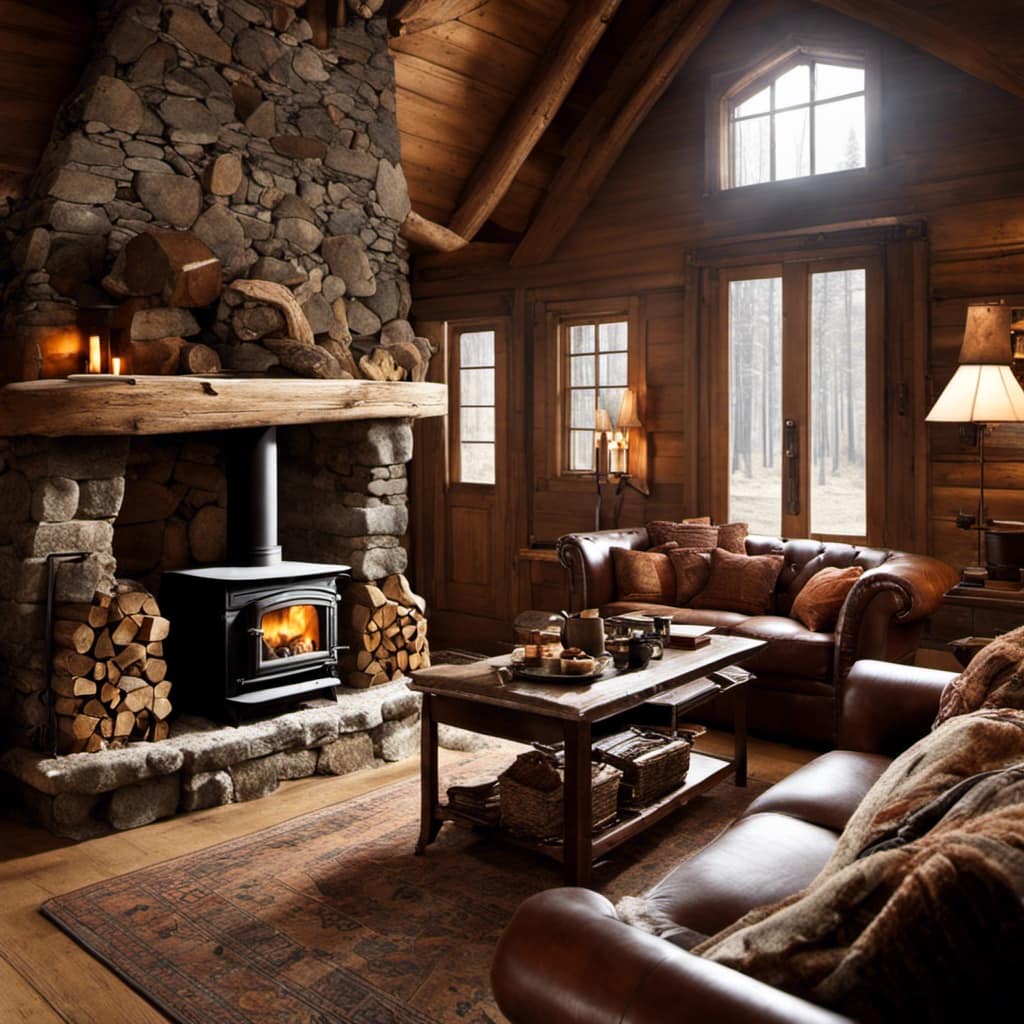
By following these guidelines and taking the necessary precautions, you can ensure a safe and efficient wood stove operation in your home.
Now, let’s move on to the step-by-step guide to installing and connecting the flue pipe.
Step-by-Step Guide to Installing and Connecting the Flue Pipe
Before beginning the installation process, carefully measure the length of the flue pipe and ensure all connections are secure.
Installing a flue pipe for a wood stove is a crucial step in ensuring the safe and efficient operation of your heating system.
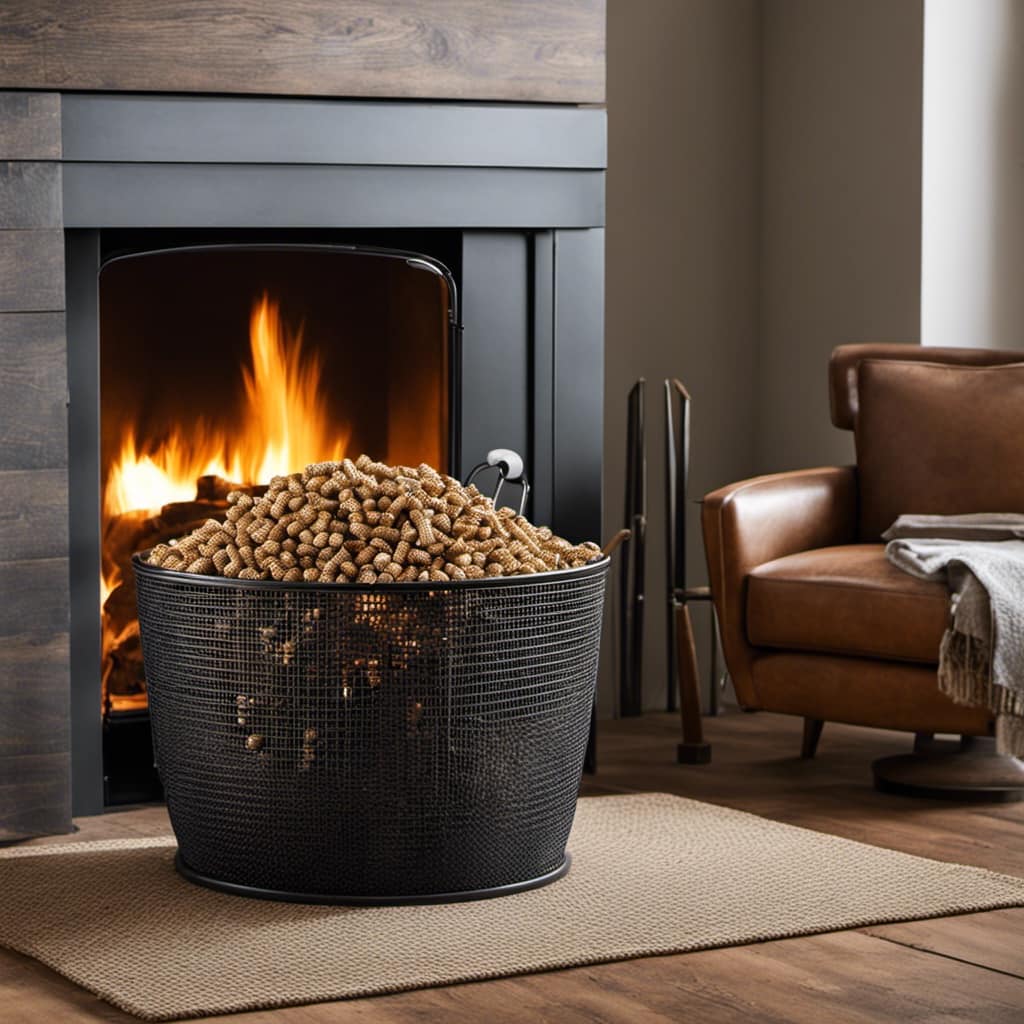
Start by assembling the flue pipe sections, making sure they fit tightly together. Use high-temperature silicone sealant on the joints to prevent any leaks.
Connect the flue pipe to the stove’s outlet collar, securing it with screws or clamps.
Extend the flue pipe vertically through the ceiling and roof, using a support bracket to keep it stable.
Ensure that the flue pipe maintains the proper clearance from combustible materials, as specified in the manufacturer’s instructions.
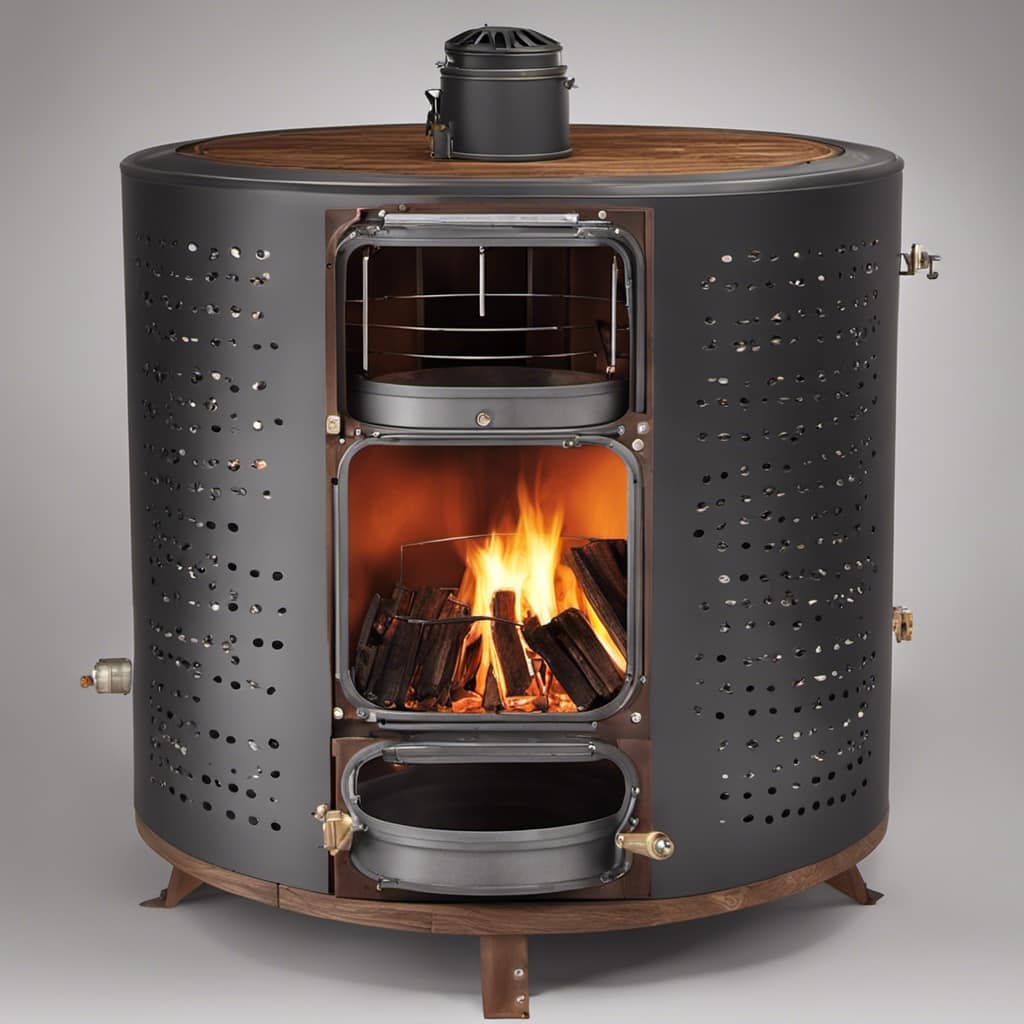
Once the flue pipe is installed, you can transition into the subsequent section about maintaining and cleaning your flue for optimal performance.
Maintaining and Cleaning Your Flue for Optimal Performance
How often should I clean and maintain my flue to ensure optimal performance, and what are the best methods for doing so?
Cleaning and maintaining your flue is crucial for the safe and efficient operation of your wood stove. Ideally, you should clean your flue at least once a year, preferably before the start of the heating season. However, if you use your wood stove frequently, it may be necessary to clean it more often.
To clean your flue, start by removing any debris or creosote buildup using a chimney brush. Make sure to wear protective gear and follow safety guidelines.

Additionally, it’s important to inspect your flue for signs of damage such as cracks, corrosion, or loose bricks. If you notice any of these issues, it’s recommended to seek professional assistance to repair or replace the flue.
Regular cleaning and maintenance, along with proper burning practices, will ensure optimal performance and extend the lifespan of your flue.
Troubleshooting Common Issues With Flue Operation and How to Fix Them
I’m having trouble with the flue not fully opening, and I’m not sure how to fix it. This is a common problem that many people face with their flues.
Here are some troubleshooting techniques that can help you resolve this issue:
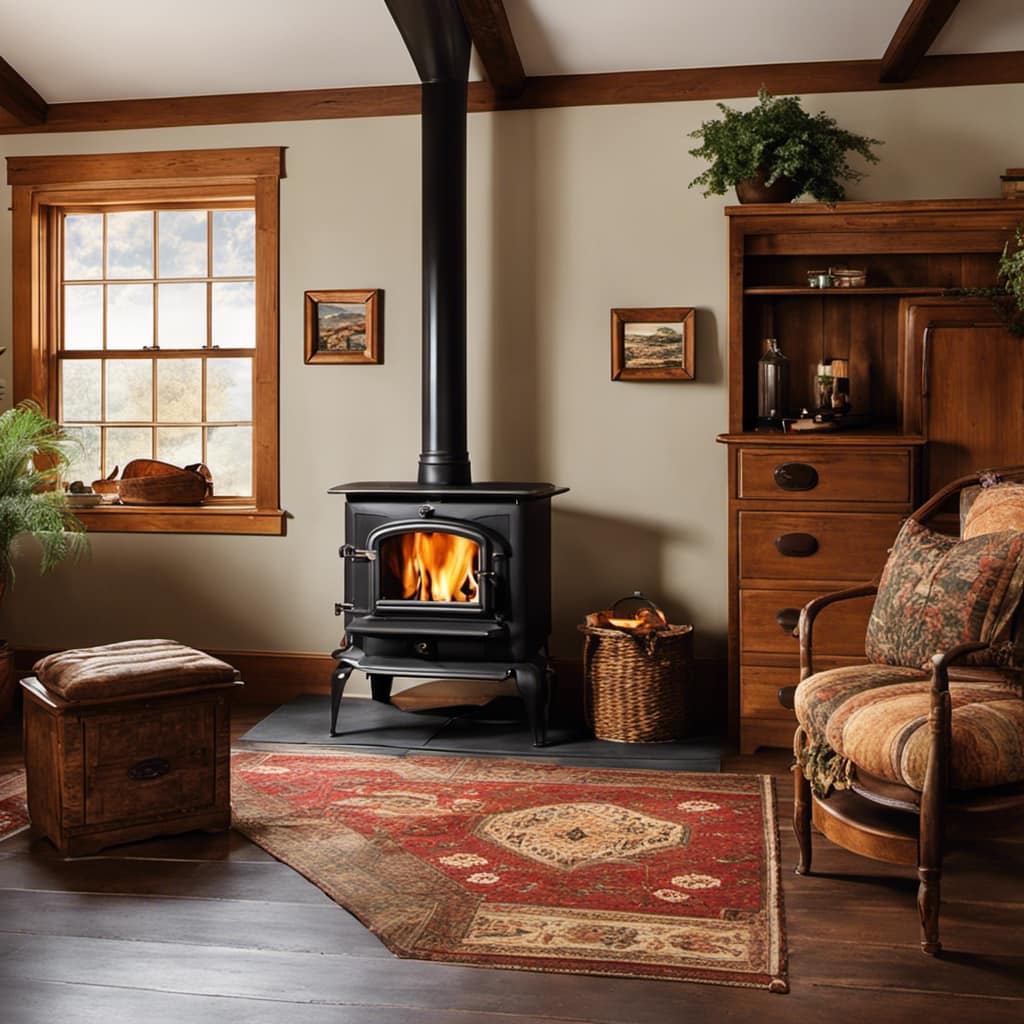
-
Check for obstructions: Sometimes, debris or creosote buildup can block the flue, preventing it from fully opening. Use a flashlight to inspect the flue and remove any blockages.
-
Adjust the damper: The damper controls the amount of airflow in the flue. If it’s not fully opening, it might be due to a malfunction or improper adjustment. Consult your stove’s manual to learn how to adjust the damper correctly.
-
Clean the flue: Over time, creosote can accumulate on the flue walls, restricting its movement. Regular cleaning can prevent this buildup and ensure smooth operation.
Frequently Asked Questions
Can I Use the Same Flue for Multiple Wood Stoves?
Yes, you can reuse a flue for multiple wood stoves. However, there are benefits to having a separate flue for each stove, such as improved efficiency and reduced risk of chimney fires.
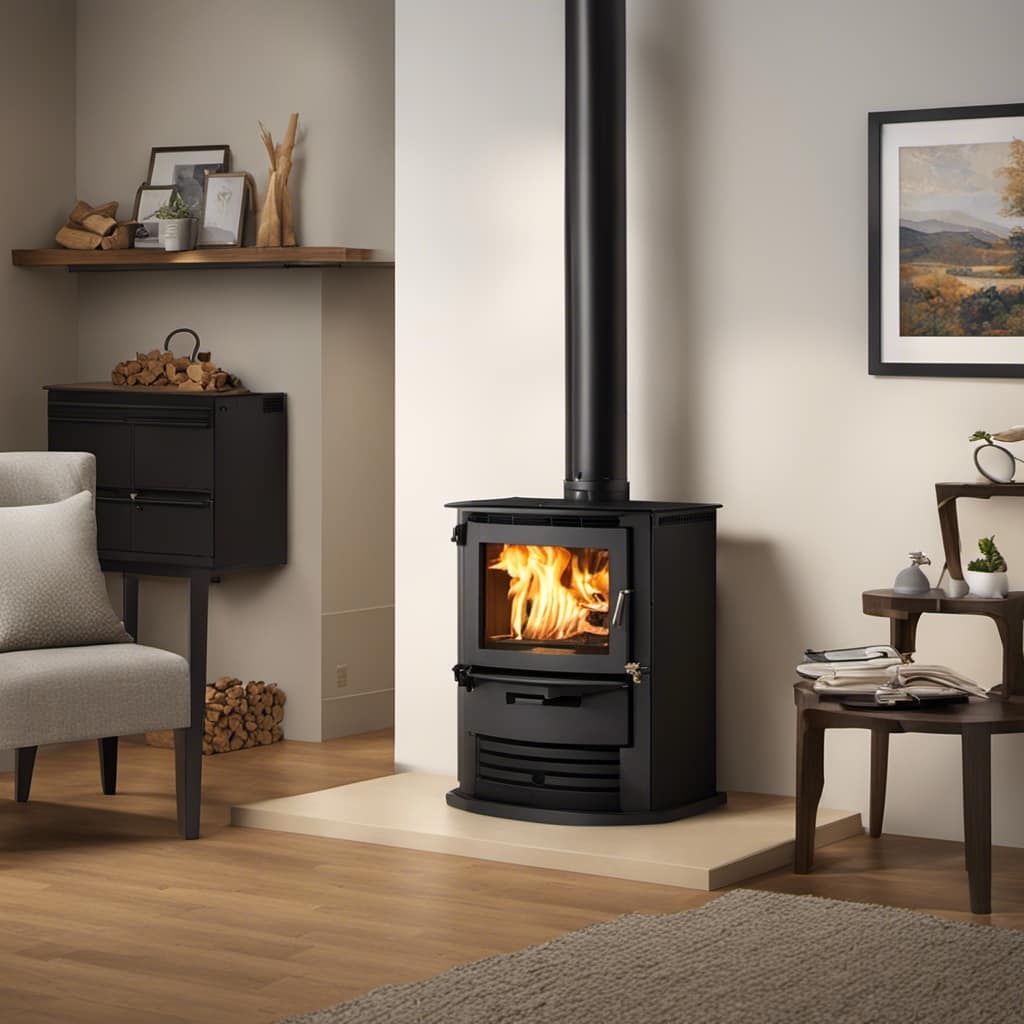
How Often Should I Clean My Flue for Optimal Performance?
I clean my flue for optimal performance at least once a year. It’s important to remove any creosote buildup and debris to prevent chimney fires and ensure proper ventilation. Here are some flue cleaning tips.
Can I Install a Wood Stove Without a Flue?
Yes, it is possible to install a wood stove without a flue, but it is not recommended. A flue is essential for safely venting the smoke and gases produced by the stove. There are alternative heating options available if a flue is not feasible.
What Type of Wood Should I Use in My Wood Stove?
To run a flue for a wood stove, it’s crucial to choose the right type of firewood. Hardwoods like oak and maple burn longer and produce more heat. Remember to store your firewood properly to ensure it’s dry and ready to burn.
How Do I Know if My Flue Is Functioning Properly?
When it comes to a malfunctioning flue, signs to look for include smoke backdrafting, soot buildup, and a lack of draft. Troubleshooting common flue problems is crucial to ensure proper ventilation and prevent potential hazards.
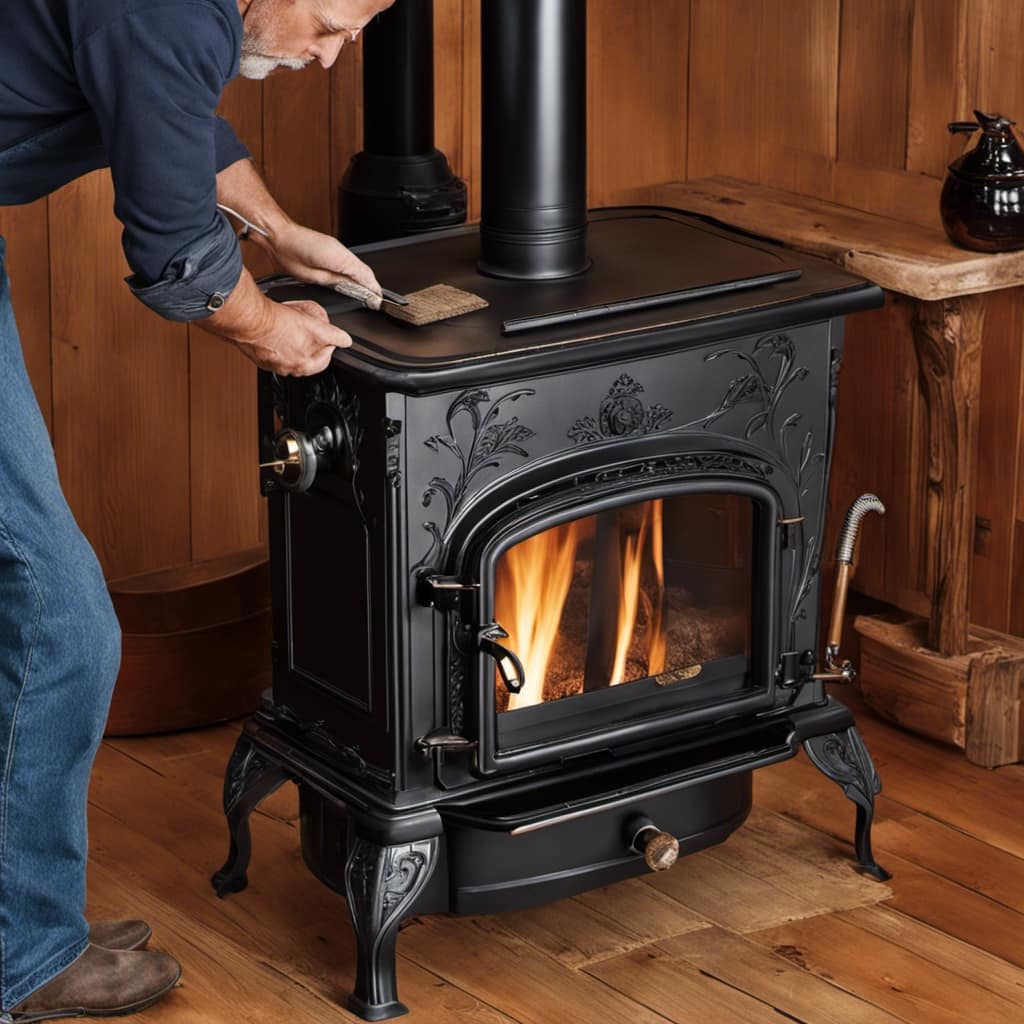
Conclusion
In conclusion, a properly functioning flue is crucial for the efficient operation of a wood stove.
Just like a clear path guides a hiker through a dense forest, a well-maintained flue ensures the smooth flow of smoke and gases out of your home.
By following the steps outlined in this article, you can install, connect, and maintain your flue system to enjoy optimal performance and a cozy, warm atmosphere in your living space.
Remember, a well-functioning flue is the key to a safe and efficient wood stove experience.

Growing up surrounded by the vast beauty of nature, Sierra was always drawn to the call of the wild. While others sought the comfort of the familiar, she ventured out, embracing the unpredictable and finding stories in the heartbeat of nature.
At the epicenter of every remarkable venture lies a dynamic team—a fusion of diverse talents, visions, and passions. The essence of Best Small Wood Stoves is crafted and refined by such a trio: Sierra, Logan, and Terra. Their collective expertise has transformed the platform into a leading authority on small wood stoves, radiating warmth and knowledge in equal measure.





